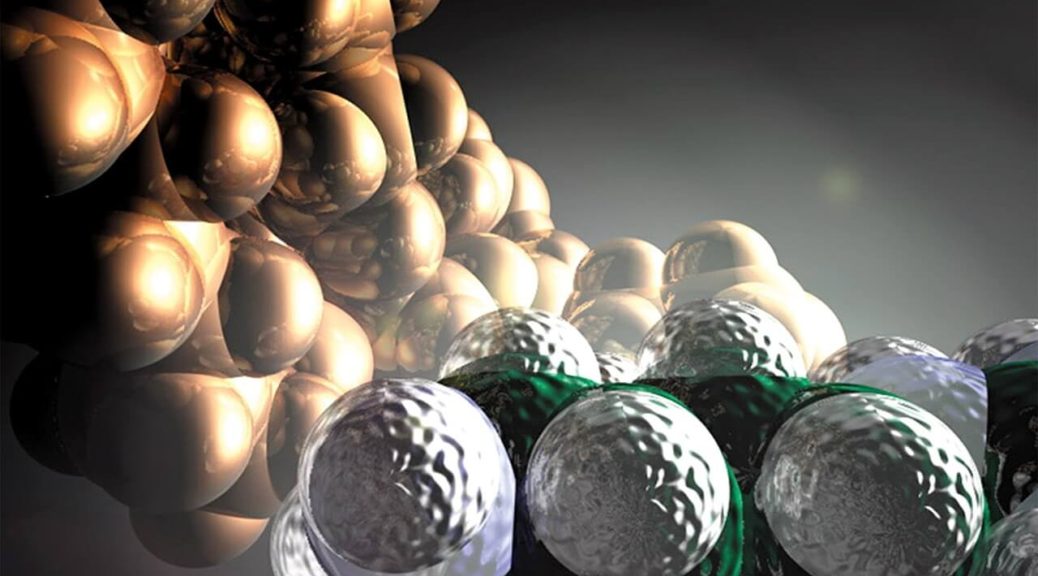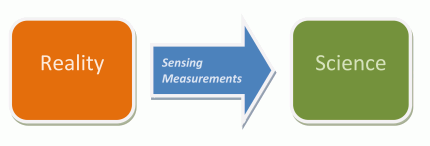Quantum Mechanics (QM) is the physics of small things. How do they behave and how do they interact with each other? Conspicuously absent from this framework of QM is why. Why small things do what they do is a question QM leaves alone. And, if you are to make any headway into this subject, your best bet is to curb your urge to ask why. Nature is what she is. Our job is to understand the rules by which she plays the game of reality, and do our best to make use of those rules to our advantage in experiments and technologies. Ours is not to reason why. Really.
Having said that, I know that we need some motivation, some semblance of an explanation, as to why small things (particles) behave differently from what we intuitively imagine them (tiny little droplets of matter) to do. I can give you three answers with increasing levels of philosophical difficulty.
Problem of Observation
An observation or a measurement is an interaction with what is being observed. And an interaction can potentially change the observation. Let me draw a labored analogy from the real world: sharks are inquisitive creatures. If you are thrashing about in the water, a great white may get curious and decide to “observe” or take a measurement on you. Unfortunately for you, sharks don’t have any limbs to check you out with. So they take a bite, which has the effect of changing what is being observed, namely you. This is roughly what we are doing when we try to locate an electron. We bombard it with an energetic radiation to observe, but by the time we get to see it, we would have sent it flying in god knows what direction. QM can be thought of as a framework to handle this observational difficulty, although this line of thinking is not quite right.
Theory beyond Perception
A slightly more appropriate way of thinking about QM still involves human perception. We saw in the previous post that we have classical physics (which is, by and large, a mathematical rendition of our common sense) to handle phenomena taking place at human scales. Once we breach the boundaries of our perceptual apparatus, however, we have no right to expect things to follow the framework based on our common sense, which just doesn’t apply in those domains. In other words, particles and their interactions exist in a reality that is beyond our common sense.
If you think about it, it has to be that way. The constituents of a water molecule, namely hydrogen and oxygen, don’t behave anything like water. Similarly, constituents of an atom, electrons and protons, do not have to behave anything like matter. Particles are not little droplets of matter. They are strange entities with properties that we cannot intuitively grasp. We are just lucky that those smart physicists figured out Quantum Mechanics, which particles and interactions do seem to obey.
Perception, Physics and Philosophy
The third and philosophically hard way of looking at Quantum Mechanics is again in terms of perception and reality. Although we didn’t describe it that way, the philosophical assumption behind classical physics is an obvious one, which is probably why nobody takes the trouble to describe it. We assume that our senses and our measuring apparatuses can and do perceive and report the reality faithfully. In other words, there is a physical reality out there, and we just sense its features directly. These features form the basis on which we build our physics, as shown in Figure 1 below.
Figure 1. Our sense of reality, and how it is used in physics
However, we have no particular reason to believe in the reality as we sense it. After all, we know that the reality created by our auditory sense (sound, tone etc.) has nothing to do with what is being sensed (air pressure waves, frequency etc.) Similarly, smells are a far cry from any real, physical properties of the molecules causing them. We also know that the kinematics in a bat’s echolocated space is very different from that of our space. (In fact, the bat space is pretty much identical to the space in Special Relativity with the speed of sound replacing that of light; but that is another story.)
Space, sound, smell etc. are merely cognitive models representing the signals that our brain receives. These models help us navigate and survive. But they are not reality itself. So the picture of reality we should keep in mind is what is drawn below in Figure 2. There is an unknowable absolute reality generating our sense data inputs, which create our perceived reality. When it comes to space and objects, we mistake it to be the true reality, and try to describe it using our scientific machinery.

Figure 2. A more accurate way of thinking about reality and how it should be used in physics
It is the middle block, “Perceived Reality” that classical physics describes so well. And it is this block that lacking in Quantum Mechanics. We do not have a cognitive model, and our minds cannot deal with its absence too well. So we try to come up with interpretations that fill this void. The best thing to do, however, is to just trust the mathematical framework that is QM as a tool that knows the connection between the absolute reality (the cause giving rise to our perceived reality) and the science that we can do experiments with and test. Well, I did warn you that this third interpretation of mine was philosophically hard.
Now that we came this far with the distinction between absolute reality and perceived reality, let’s take it a bit further. It is possible to disentangle the effects of perception and cognition from our perceived reality (albeit by assuming a geometry for the absolute reality) and work out interesting models for certain astrophysical phenomena. My book The Unreal Universe is based on this line of thinking.
In the next post, we will get out of this philosophical discussion, and describe how physicist knew that classical physics was incomplete and that they needed a new theory to handle small things.



